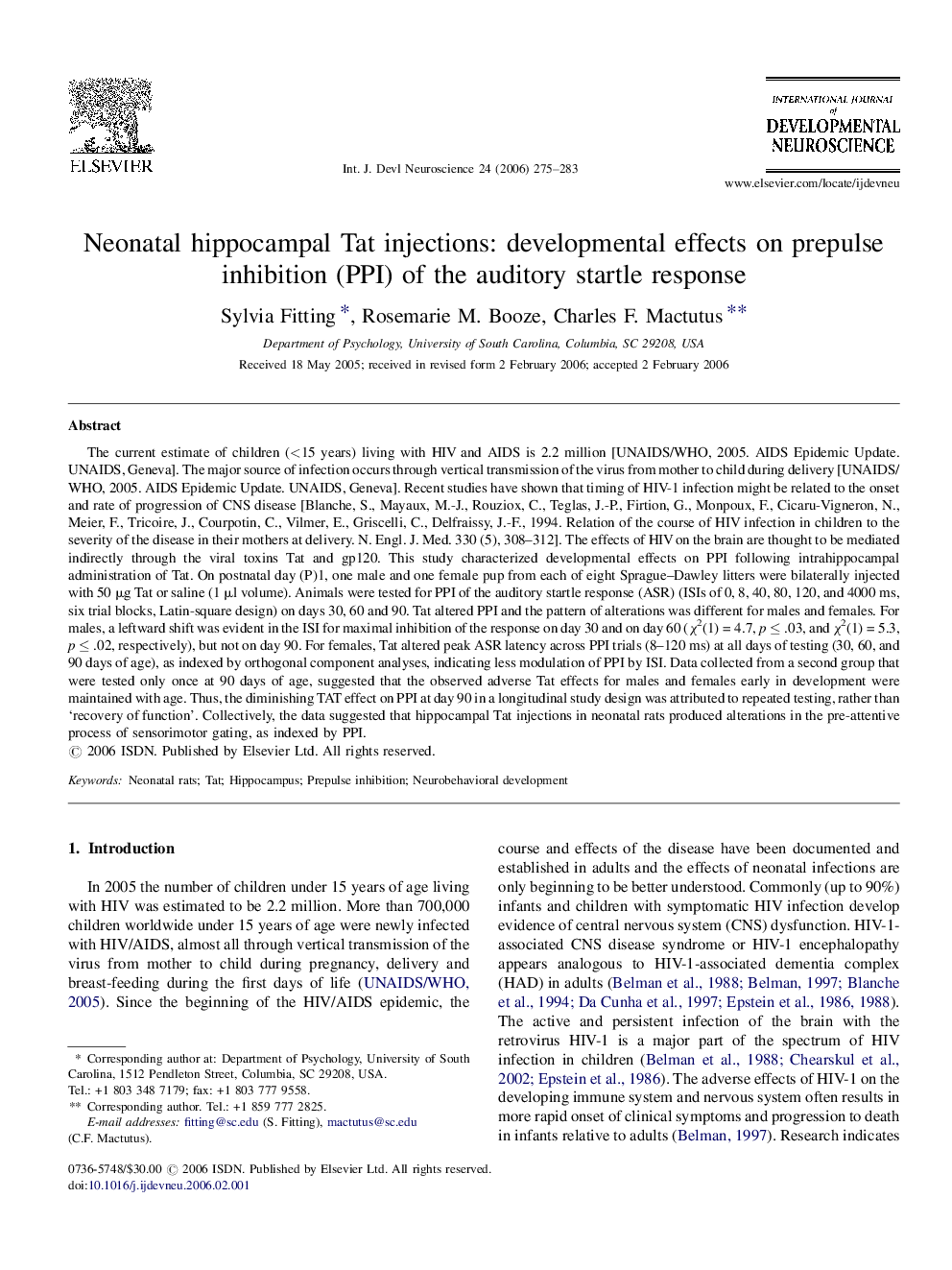| Article ID | Journal | Published Year | Pages | File Type |
|---|---|---|---|---|
| 2787119 | International Journal of Developmental Neuroscience | 2006 | 9 Pages |
The current estimate of children (<15 years) living with HIV and AIDS is 2.2 million [UNAIDS/WHO, 2005. AIDS Epidemic Update. UNAIDS, Geneva]. The major source of infection occurs through vertical transmission of the virus from mother to child during delivery [UNAIDS/WHO, 2005. AIDS Epidemic Update. UNAIDS, Geneva]. Recent studies have shown that timing of HIV-1 infection might be related to the onset and rate of progression of CNS disease [Blanche, S., Mayaux, M.-J., Rouziox, C., Teglas, J.-P., Firtion, G., Monpoux, F., Cicaru-Vigneron, N., Meier, F., Tricoire, J., Courpotin, C., Vilmer, E., Griscelli, C., Delfraissy, J.-F., 1994. Relation of the course of HIV infection in children to the severity of the disease in their mothers at delivery. N. Engl. J. Med. 330 (5), 308–312]. The effects of HIV on the brain are thought to be mediated indirectly through the viral toxins Tat and gp120. This study characterized developmental effects on PPI following intrahippocampal administration of Tat. On postnatal day (P)1, one male and one female pup from each of eight Sprague–Dawley litters were bilaterally injected with 50 μg Tat or saline (1 μl volume). Animals were tested for PPI of the auditory startle response (ASR) (ISIs of 0, 8, 40, 80, 120, and 4000 ms, six trial blocks, Latin-square design) on days 30, 60 and 90. Tat altered PPI and the pattern of alterations was different for males and females. For males, a leftward shift was evident in the ISI for maximal inhibition of the response on day 30 and on day 60 (χ2(1) = 4.7, p ≤ .03, and χ2(1) = 5.3, p ≤ .02, respectively), but not on day 90. For females, Tat altered peak ASR latency across PPI trials (8–120 ms) at all days of testing (30, 60, and 90 days of age), as indexed by orthogonal component analyses, indicating less modulation of PPI by ISI. Data collected from a second group that were tested only once at 90 days of age, suggested that the observed adverse Tat effects for males and females early in development were maintained with age. Thus, the diminishing TAT effect on PPI at day 90 in a longitudinal study design was attributed to repeated testing, rather than ‘recovery of function’. Collectively, the data suggested that hippocampal Tat injections in neonatal rats produced alterations in the pre-attentive process of sensorimotor gating, as indexed by PPI.
